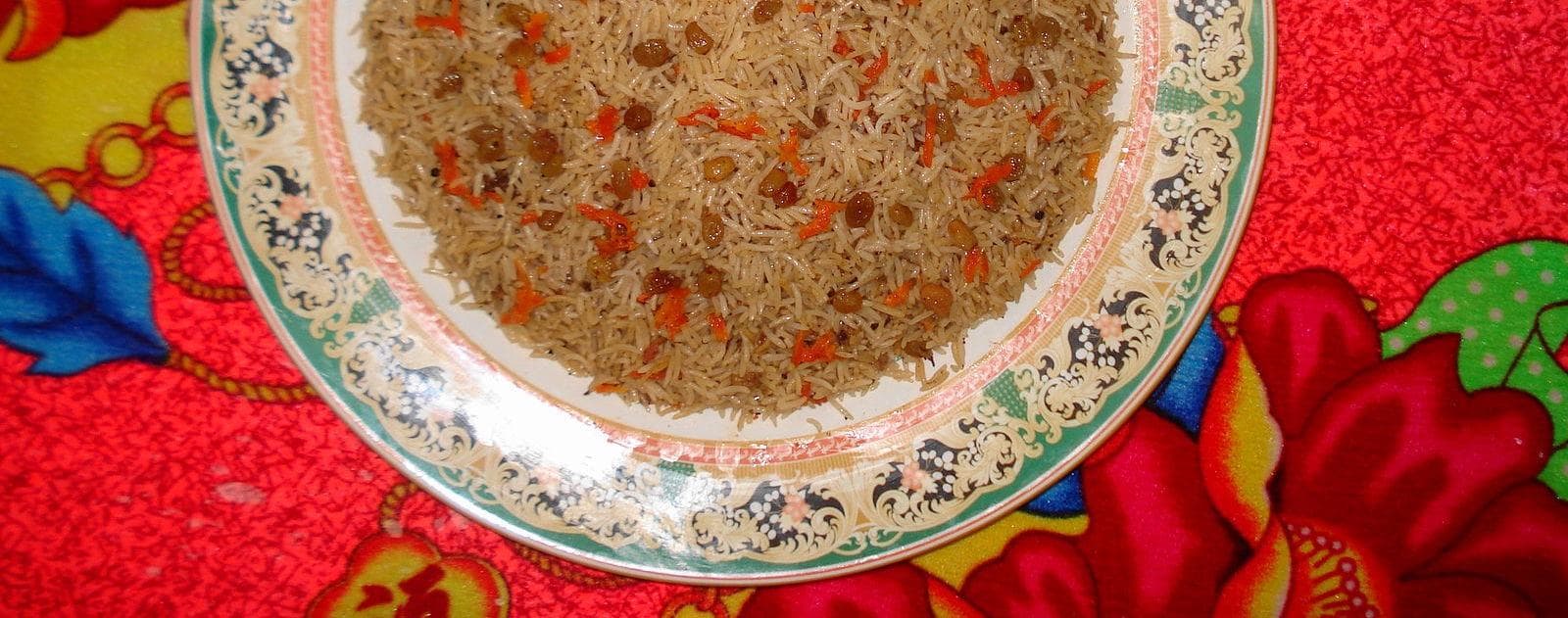4 min read
Qabili Palaw

Just here for the recipe? Click here.
Every culture has dishes that are so common in the people’s lives, you simply cannot avoid them. And why would you try? These are usually dishes that have been cooked and improved over generations. The combination of ingredients and techniques perfected to produce a dish that is “just right”.
For me, these dishes can be grouped into two categories: 1) fancy and 2) everyday. Fancy are dishes that can be found in special occasions or when there is a reason to celebrate. Everyday ones are the go-to dishes at home and everyday life. Qabili palaw is one of the the former in Afghan cuisine and it is only fitting to be the first recipe on this blog.
Qabili palaw, also spelled Kabuli palaw, is a rice dish that is served at special occasions. You will be hard-pressed to find an Afghan gathering, be it a happy or a sad one, without Qabili palaw being served. In terms of popularity, it is to Afghanistan what pizza is to Italy.
There are many tales as to how this dish was named. Some say it was named so because it originated in Kabul, the capital of Afghanistan, due to the similarity of the name. Others believe that it is called qabili after the word "Qabil", which means "able", since it was used to measure the cooking abilities of a woman.
Rice type
This is a rice dish so the type of rice being used will obviously make or break the dish. The rice we would like to use here is Sella rice, also known as parboiled rice. As the name suggest, this basmati rice is parboiled and then dried which gives it a “chewy” texture and prevents the rice from sticking to each other. Note, however, that this is parboiled rice and not precooked rice, whatever that may be. It actually takes slightly longer to cook sella rice than normal basmati rice. Look for sella rice in your local Asian shop. If you cannot find sella rice, substitute with a long grain basmati rice or just basmati rice.
For the rice
- 400g Sella/Basmati rice
- 3l Water
- To taste Salt
For the rice
Rinse and soak the rice for 1.5h. Add salt to boiling water until it is as salty as you would like the rice to be. Drain rice and add to boiling water. Mix rice in. Cook the rice until it is around 80% cooked1. Drain the rice and set aside2.
For the broth
- 500g Lamb
- 150ml Vegetable oil
- 100g Onions
- 1l Water
- 2tbsp Garlic paste
- To taste Salt
For the broth
Heat oil in a large pot. Add onions. Fry until golden brown. Add the meat pieces. Fry until lightly brown on all sides. Add garlic paste. Fry for a minute, until the garlic is cooked. (Pressure cooker) Add 250ml water, bring to a boil and pressurize for 10 minutes. (No pressure cooker) Add 1l water, bring to a boil and simmer until the meat is tender. The meat should be almost falling off the bone.
For the garnish
- 100g Carrot
- 100g Raisins
- 2tbsp Vegetable oil
- 3 pods Cardamom
For the garnish
Heat oil in a pan on medium-high heat. Add carrots. Fry for 2 minutes. Add raisins. Fry until they "puff up", around 2 minutes. Add cardamom and mix well.
Assembly
In a large pot with a tight-fitting3 lid, combine 75% of the rice and 500ml of the broth. Place the meat pieces on top of the rice, on one side of pot. Cover with half of the reserved rice. Place the carrot and raisins on top of the rice, on one side of pot. Cover with half of the reserved rice. Cover the pot tightly4 and place on medium-high heat. Cook until you see steam coming through the sides of the pot. (If using oven) Place the pot in a 150 degree oven for 20-30 minutes. (else) Cook the rice on lowest heat setting for 20-30 minutes.
To serve
Remove lid. Take out the meat pieces in a plate and carrot/raisin mixture into another plate. "Fluff" the rice using a fork or spoon. This is to ensure rice does not "lump" up when cooling. On a large plate, add a layer of rice. Add a few pieces of meat on top of the rice. Add another layer of rice, covering the meat. Add a layer of the carrot/raisins mixture.
Notes
- Knowing how much to parboil the rice is a skill. One way to know is to pick a rice grain and "squish" it between your fingers. If it breaks into 3-5 pieces, its parboiled well.
- Ensure that you coordinate this dish so that the parboiled rice does not have to wait too long before proceeding with the assembly. Otherwise, the rice may dry out.
- A tight-fitting lid is a must here, since this recipe relies on trapping the steam and finishing off the rice using that steam.
- If using an oven, you could add a layer of aluminum foil under the lid. If not using an oven, you could use a clean kitchen towel under the lid.